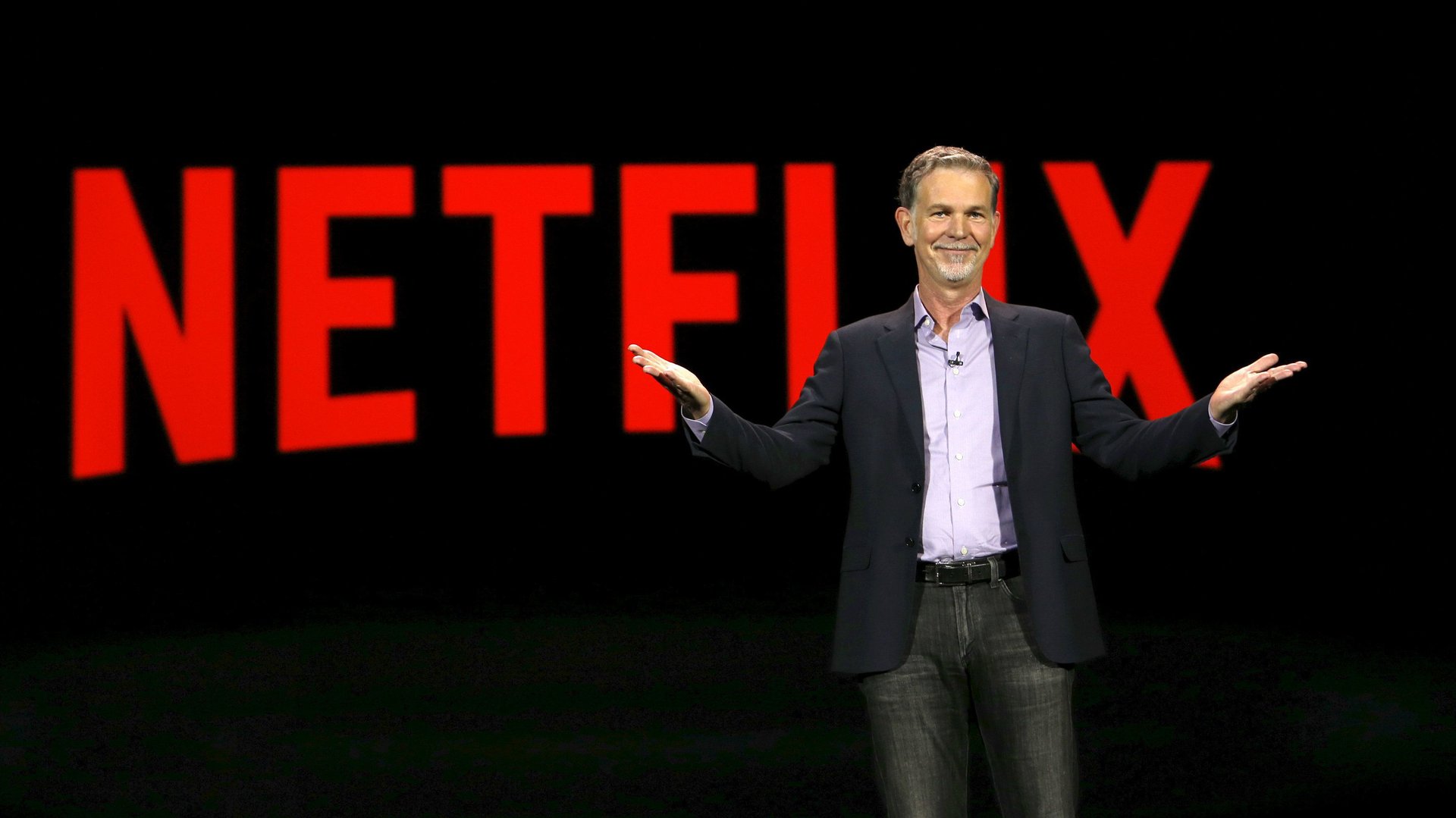The psychology behind the way Netflix raises prices
On a dry day in July seven years ago, Reed Hastings made a huge mistake. The chief executive of Netflix, who rarely makes massive missteps, surprised customers with the news that the company was scrapping its popular $10-a-month DVD and streaming-video package and replacing it with two separate services—one for DVD rentals, which Netflix was hoping to spin off into a company called Qwikster (a plan that failed), and another for streaming video, the service that would come to define Netflix and later house its original content.


On a dry day in July seven years ago, Reed Hastings made a huge mistake. The chief executive of Netflix, who rarely makes massive missteps, surprised customers with the news that the company was scrapping its popular $10-a-month DVD and streaming-video package and replacing it with two separate services—one for DVD rentals, which Netflix was hoping to spin off into a company called Qwikster (a plan that failed), and another for streaming video, the service that would come to define Netflix and later house its original content.
Each package would cost $7.99 a month, or a total of $15.98 for the pair, starting that September. It was effectively a 60% rate hike from what customers were paying.
Hastings reportedly thought any pushback from customers would be small and fade quickly. But the company lost 800,000 subscribers during the quarter it imposed the hike. And Netflix’s stock price plummeted in the months that followed, erasing more than $11 billion in shareholder wealth in a year, USA Today reported around the anniversary of the announcement.
For those investors who stuck around, it was more than worth it. The stock is now one of the hottest around. And Netflix’s subscriber base has more than bounced back, surpassing 100 million this year.
When Netflix raised rates this month, it increased the price of its most popular plan in the US by $1 and its premium package by $2. The hike hit new signups first and is still rolling out to existing users—a strategy Netflix uses to give people time to adjust. The company, shrewdly, did not touch the basic plan—its cheapest offering at $7.99 a month—so that folks on tighter budgets could still afford the service.
Unlike seven years ago, the move pushed Netflix’s stock to new heights. The key, for Netflix’s management, was learning to raise prices without spooking subscribers—by doing so in small and infrequent doses.
“Any time a service increases its price, that change causes consumers to re-assess their perceived value of the service,” Brett Sappington, senior director of research at the firm Parks Associates, tells Quartz. “While most will continue as subscribers, some will consider other options or discontinue their subscription. The key for Netflix is to not cause consumers to enter the evaluation or shopping cycle too often.”
This is especially true now that there are other viable options for subscribers to jump to, like Amazon Prime Video or Hulu, neither of which have raised rates recently. (Though Hulu is undercutting its rival.)
Netflix only hiked prices in the US and a few other established markets like the UK and Canada this year, so it could conceivably raise rates internationally in the near future without falling into the trap Sappington warned about. “It’s pretty clear that one will follow,” another analyst, Clement Thibault at Investing.com, said of a hike abroad. Netflix’s international base is now its largest, but the US is still the bigger revenue driver.
Netflix has been careful not to raise rates too quickly in markets where it’s still building out its library and launching originals geared toward local audiences. It needs to become a service its customers can’t live without, before they rethink its value. Netflix launched in Australia two years ago and hiked prices for the first time this year. That was only when a new digital tax was imposed, which some call the “Netflix tax.”
“It’s true we may not choose to raise prices in a market that we’re only a year to 18 months old in,” said David Wells, the company’s chief financial officer, on Netflix’s most recent earnings call, “specifically around markets that we didn’t have a tailored library launch.”
Some analysts expect and welcome another modest price lift in the US next year to cover the rising cost of Netflix’s content. An extra dollar here and there, if Netflix continues to add new “must-watch” series and movies all the time, shouldn’t dent its base too badly. This quarter, while the new rates roll out in the US, Netflix is releasing the highly anticipated second season of Stranger Things, much-hyped new series like Mindhunter and Godless, and movies like Bright.
For Netflix, quality equals quantity. “Price is all relative to value,” said Hastings, on his company’s latest conference call. “We’re continuing to increase the content offering, and we’re seeing that reflected in viewing around the world. So, we try to maintain that feeling that consumers have that we’re a great value in terms of the amount of content we have relative to the prices.”
And, for a lot of people, Netflix is still pretty good value for the thousands of titles it offers. Analysts at Bernstein said a majority of people they interviewed in focus groups this year said they’d be willing to pay up to $15 a month for Netflix.
“The general consensus and public perception of Netflix as the default streaming company without a doubt gives it some pricing power,” said Thibault, the analyst at Investing.com. He argues that Netflix may have to hike rates more regularly to keep up with its “incredible rate of spending.” The company plans to spend up to $8 billion on content next year, up from $6 billion this year.
Just as long as it continues to do so slow and low.